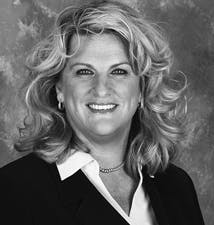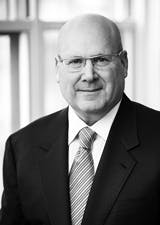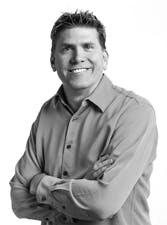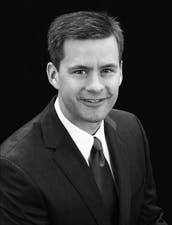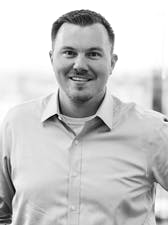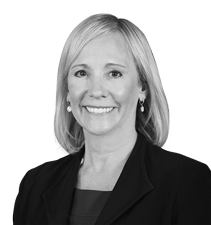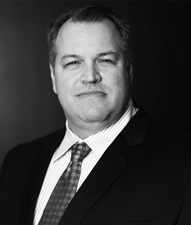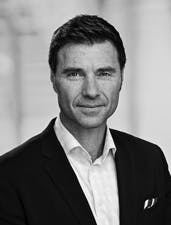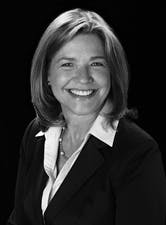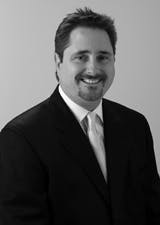Top 2015 dental industry trends and 2016 predictions from the Apex360 Editorial Advisory Board
Introducing the Apex360 Editorial Advisory Board
Apex360 was created to bring you the stories of the dental industry in their context. Today's dental professionals have access to a colossal amount of general information online; little of it addresses the forces and players behind developments and trends in the dental industry.
Nobody knows the dental industry like the professionals who move it forward every day. To best bring you these insights and to provide expert input in our editorial process, we have formed the Apex360 Editorial Advisory Board. These individuals are key industry experts and emerging leaders, and their participation in the editorial process means that we will be able to bring you even better content in the coming years—covering new products, economic developments, medical regulations, mergers and acquisitions, policy changes, tradeshow news, technological advances, selling trends, corporate developments, and whatever happens in the industry that no one has yet predicted.
Keep reading to meet our editorial advisory board and get the inside scoop on what they thought the biggest trends of 2015 were, as well as what you can expect in 2016. We will be bringing you much more in the coming year.
—Apex360 editors
Bete Johnson
Vice president, sales | CareCredit
Bete Johnson, a 20-year sales, marketing, and practice management veteran, is vice president of sales for CareCredit. She has been a core part of the CareCredit team for over 14 years and was recognized as one of the Top 25 Women in Dentistry. Through her engagement with dental professionals, including consultants, associations, practices, and dental suppliers, Bete provides opportunities for networking and creating new relationships that benefit the dental profession.
What new dental consumer trends have you identified?
In our recent Patients' Path to Dental Care Purchases study, CareCredit identified a number of trends among dental consumers. Here are some of the key findings:
• 67% of patients asked about and researched the cost and financing of dental procedures, which is more than actually researched the procedures themselves (58%).
• 52% of patients were not aware that financing was a payment option. However, 47% of respondents who did not have CareCredit said they would consider financing through a health-care credit card like CareCredit if it enabled them to receive care right away.
• 29% of all respondents indicated they would be likely or extremely likely to apply for and use CareCredit for fees of only $200.
• Without available financing, 39% of patients said they would not have had dentistry done at all. (The average out-of-pocket investment for the survey participants was $1,177.80.)
Source: CareCredit Path to Purchase Research, Dental Category. Conducted by Rothstein Tauber Inc., 2014.
BY BETE JOHNSON | Patients ask: Should I? Can I? Will I?
Josh Killian
Vice president of marketing, technology and equipment | Patterson Dental Supply
I am responsible for overseeing the development and implementation of all marketing programs. These support the sales of our proprietary technology products, CAD/CAM CEREC family of products, digital imaging products (both 2-D and 3-D), and all core equipment products to customers and our equipment specialists, CEREC specialists, territory representatives, and support personnel at our local sales offices and the Patterson Technology Center.
What was the most significant trend or change you saw in the dental industry this year?
Three common phrases come to mind when I think about change: "Change is inevitable," "Change is the only constant," and "Times change." These adages became common because they are true. While change is inevitable, it is also the driving factor in the dental market-it has been positive and has been the catalyst for new procedures, products, and services that have impacted patient care and that will provide major shifts in how and what patients expect. We have also started to see shifts in the demographics of providers (e.g., millennials, generation X, baby boomers), which bring a whole new vision for the practice of the future and how technology will impact dentistry.
The dental student graduating today has dramatically different views of and expectations about technology than the dental student of 10, 20, or 30 years ago. This new perspective will surely have an impact on procedures and technology adoption in the practice. The patient and provider of today and tomorrow place more value on the in-office experience than they have in the past because the patient is more educated than ever before.
What opportunities did 2015 present, and how did you take advantage of them?
2015 provided many opportunities, but I think the most impactful was the evolution of implants from having a limited application to becoming more of a standard of care. More companies entered the space than ever before, and the impact of technology, most importantly 3-D imaging, allowed the GP to feel more comfortable proposing an implant. Again, technology is the driving change that is fueling dentistry.
Another change in the industry is the relationship between GP and specialist. There will always be a need for specialists, but their relationship with the referring GPs is evolving from one of a subcontractor to a collaborative partner. The patient of tomorrow will require a seamless interaction between the specialist and GP-or will look for another provider. Running a successful practice isn't easy and requires a lot of hard work and dedication by each member of the dental office team. The importance of surrounding yourself with the right team members can't be understated, and this includes the specialists who support each GP practice.
2016 prediction:
The dental market will continue to see improved growth in consumables, equipment, and technology, fueled by increased patient demand and education.
Lou Shuman, DDS, CAGS
President and CEO | Cellerant Consulting Group
Lou Shuman, president and CEO of Cellerant Consulting Group, is personally known for his expertise in Internet strategy, strategic relations, emerging technologies, digital marketing methods, and operational practice management. He is an executive consultant for Kavo Kerr, DEXIS, i-CAT, Pelton & Crane, Propel Orthodontics, WEO Media, ZQuiet, HR for Health, and Implant Direct. He is the chair of the technology advisory board for WEO Media and a member of numerous clinical advisory boards and editorial boards, including Orthodontic Practice US, The Progressive Dentist, and Seattle Sleep Education LLC. He is also the managing editor of the journal Dental Sleep Practice.
He is the creator of the Best of Class Awards, recognizing annually the most important technologies in the industry. He served as president of Pride Institute for six years and as vice president of clinical education and strategic relations at Align Technology for seven years. Gordon Christensen cited him as "one of the most influential dentists in the country today."
What was the most significant trend or change you saw in the dental industry this year?
The most significant trend was the medical community's increased recognition of dentistry's vital role in solving sleep breathing problems. Business and practitioner interest in the sleep sector grew significantly as a result of the potential impact of oral appliance therapy (OAT) in treating sleep apnea and snoring. Corporate interest also grew significantly-not only was there a proliferation of sleep companies (from educational, to billing, to sleep appliances), but large distributors also integrated multiple sleep companies to provide full services to their customer bases. An example is the new tie between EZ Sleep (a complete sleep service company), Henry Schein, and i-CAT. 2015 also saw the first private journal dedicated to sleep, Dental Sleep Practice.
What opportunities did 2015 present, and how did you take advantage of them?
2015 presented me opportunities as a corporate executive consultant, especially supporting new companies entering dentistry, and dramatic growth. As a result, I have started a new company to add significant resources to support companies of all sizes and their customers at all levels. The company is called Cellerant Consulting Group. Right now, it supports 12 dental and medical companies.
2016 prediction:
We'll see increased acceptance from the medical community as it recognizes dentists as oral health specialists, allowing for more collaboration around sleep problems, oral cancer, facial esthetics, and periodontal health.
Andy Jensen
Vice president, sales and marketing | Curve Dental
Andy Jensen has 21 years of dental marketing experience. He began his career with Dentrix Dental Systems (later acquired by Henry Schein), building the profession's number one brand in dental software as director of marketing. During his tenure with Dentrix, the user base grew from 250 to more than 25,000. Today he is working toward a repeat. As the vice president of sales and marketing, Andy is the voice of Curve Dental, leading this startup from obscurity to dentistry's leader in cloud-based management software. Andy has lectured at various dental meetings, blogs regularly, maintains an active YouTube channel, and has been published in many of the leading dental trade magazines.
What was the most significant trend or change you saw in the dental industry this year?
The most significant trend in the industry, from a software developer's point of view, is the profession's migration to the cloud. The migration began in earnest in 2014 but accelerated in 2015. Interest in the cloud has been fueled, to some degree, by growth from the group practice segment, with more doctors opening second and third practices and more organizations jumping into the dental market to begin franchise developments. The cloud offers these types of organizations significant management advantages.
What opportunities did 2015 present, and how did you take advantage of them?
Curve Dental has played to the continuing strong interest in the cloud as a technology platform to increase brand awareness.
2016 prediction:
The cloud will become the best-selling technology platform for group practice management software, followed soon by private practitioners.
BY ANDY JENSEN | Today's dental software ecosystem and what it means for you
Jim Zenk, JD, CPA
Partner | HinrichsZenk+Pesavento
Jim Zenk is a partner at HinrichsZenk+Pesavento, an accounting and advisory firm focused on providing dentists with tax, accounting, and business planning expertise. Jim previously worked at two of the "Big Four" public accounting firms; a large Washington, DC, law firm; and in corporate tax as property tax manager for MCI Corporation. Jim earned his bachelor's degree in accounting from Iowa State University and his law degree from the University of Kansas, where he focused on tax and business law. He is a licensed CPA in Kansas and Missouri, and a licensed attorney in Minnesota and Washington, DC. Jim is a member of the American Institute of Certified Public Accountants, the Kansas Society of Certified Public Accountants, and the Missouri Society of Certified Public Accountants.
What was the most significant trend or change you saw in the dental industry this year?
In 2015, to no one's surprise, there has been a sharp increase in the number of dental practices on the market as more dentists seek to retire. What was surprising was the spike in the number of savvy, entrepreneurial-minded dentists, typically 35 to 55 years old, hiring us to perform due diligence on these retiring dentists' practices. These mid-career dentists are changing their own practices (seemingly overnight) to either create a highly profitable practice through economies of scale or immediately grow to add a new associate. The historical model of transitioning to a young associate through a practice broker is becoming less common.
What opportunities did 2015 present, and how did you take advantage of them?
What this means for my firm is an opportunity to help dentists make this transition. As dental financial experts, we embrace a holistic approach to financial and business planning, which means we do more than accounting and tax preparation. We provide strategic advice to help guide dental professionals on increasing profitability and growing their practices the way they want. I think it's important to help ensure financial security and sound business planning for dentists from day one until they retire, and that means looking at the entire picture of each dental practice.
2016 prediction:
With that in mind, I anticipate this trend to continue into 2016, broadening the need for multitiered financial and business planning for dentists.
Andrew Hinrichs, CPA
Partner | HinrichsZenk+Pesavento
Andrew Hinrichs, CPA, is a partner at HinrichsZenk+Pesavento (HZP), a dental CPA firm. Located in the suburbs of Chicago and Kansas City, HZP works with dentists around the country. HZP is growing, thanks to its extensive knowledge of the dental industry, focused client service, and ability to help dentists make educated decisions in every financial area of their dental practices. HZP uses its collective knowledge of hundreds of dental practices to help clients analyze fee schedules and insurance choices. Tax planning opportunities, practice growth, and creative retirement planning are key focus areas.
What was the most significant trend or change you saw in the dental industry this year?
Mergers and acquisitions began to increase in 2015 at a higher rate than previous years. Pent-up supply from the post-2008 market crash has finally begun to lessen as doctors who are ready for retirement feel confident their retirement portfolios are in a better place and can provide the stability they need to list their practices.
A single-doctor practice acquiring another single-doctor practice is occurring frequently, and financing has been easy to come by. This is significant because the rate at which younger doctors were graduating was far exceeding older doctors retiring in recent years, therefore allowing new corporate dental offices to absorb a lot of the overflow and fill their ranks easily.
What opportunities did 2015 present, and how did you take advantage of them?
2015 presented a great time to start many of our doctors out on a plan for retirement savings and debt reduction. While Section 179 has not yet been increased to its higher amount, doctors are not as concerned with capital expenditures and are more apt to listen about improving their personal financial positions.
2016 prediction:
Merger and acquisition activity will continue, and a large portion will be driven by small startup dental support organizations (DSOs) in major metropolitan areas.
Rose Nierman
Founder and CEO | Nierman Practice Management
Having authored the first medical billing manual for dentists, Rose Nierman has streamlined cross-coding through automated narrative report writing, claim forms, and electronic billing with integrated training for medical billing in dentistry. Integrated systems from Nierman Practice Management are used in thousands of dental practices for medical insurance reimbursement. Nierman Practice Management's flagship products, DentalWriter and CrossCode software, bill patients' medical plans for many dental services, including CT scans, oral appliances for sleep apnea, dental implants, oral surgeries, and TMJ disorders. Nierman Practice Management also provides ADA- and CERP-approved CE courses for cross-coding from dental to medical insurance.
What was the most significant trend or change you saw in the dental industry this year?
The biggest change is, without a doubt, the October 1, 2015, transition to ICD-10 codes. ICD-10 is a coding set designed to report a diagnosis. Every dental office now needs to learn diagnosis codes, as they are now required on many types of dental claims as well as on medical claims submitted by the dental office. ICD codes were previously used for medical claims only. Nierman Practice Management is helping dental practices learn and utilize ICD diagnosis codes through our CrossCoding seminars, CrossCode manual, and CrossCode online software.
What opportunities did 2015 present, and how did you take advantage of them?
ICD-10 coding has been a unique opportunity for Nierman Practice Management. Having trained offices in using diagnosis codes for over 25 years, we are ready to help dental practices with the new ICD-10 diagnosis codes that became mandatory in October for medical and dental claims. To handle the demand, we have expanded our seminar schedule around the country.
Codes describing broken or abscessed teeth, atrophy of the jawbone, TMJ disorders, obstructive sleep apnea, and other diagnoses can be used to show the medical necessity of treatment and to help expand services offered in dental practices. The fact that dental offices are now being reimbursed by medical insurance for many new technologies benefits the entire dental industry.
2016 prediction:
With significant changes in insurance policies and education, more dental offices will be reimbursed by medical insurance plans for dental technology and services.
Brandon Campbell, DDS
Dentist | Peak Family Dentistry & Orthodontics
Originally from Houston, Texas, Dr. Brandon Campbell achieved the status of sergeant with the United States Army. He has a bachelor's degree in biology from the University of Colorado and completed his DDS at the University of Colorado School of Dental Medicine.
Dr. Campbell is the owner and dentist of Peak Family Dentistry & Orthodontics in Westminster, Colorado. His philosophy to practicing dentistry is a business approach with comprehensive clinical views, looking at all factors presented and allowing for longer-lasting clinical results. He enjoys dentistry because of the diverse range of patients it allows him to serve and the diversity of procedures he can offer.
Dr. Campbell is active in the community with local dental study clubs of all specialties, local dental committees, and associations. He also volunteers his dental services to patients in his local community seeking better dental health at no charge and to veterans across Colorado. He partners with Give Kids A Smile, Dental Lifeline, Donated Dental Services, and other local foundations.
What was the most significant trend or change you saw in the dental industry this year?
The most significant trend is the increase in the rise of corporate or group practices. In my journey this year to purchase a dental practice that was equipped to meet my needs, I found this challenging because corporations or group practice owners were purchasing practices before they went on the market, or they were able to outbid solo practitioners like me.
We have all seen this trend on the rise, and we are seeing more and more dentists-especially new graduates-accepting this as their practice model. It's related to the fact that most dental graduates are graduating with debt exceeding $300,000. Over 25% of graduates are seeking corporate positions while less than 10% are seeking solo-practice ownership.
These larger practices are also allowing more in-house treatment to be completed-such as orthodontics, endodontics, and oral maxillofacial surgery-instead of referring patients to specialists as they did in the past. In some instances, group practices have more money to front these larger business expenses, real estate expenses, equipment expenses, and for some, the expenses associated with hiring specialists.
What opportunities did 2015 present, and how did you take advantage of them?
2015 brought me practice ownership and technology. I was looking for an existing dental practice to purchase, but I was unsuccessful in finding a practice that could fit my needs as a clinician. I was able to purchase real estate and build a practice from scratch to fit my clinical needs for the rest of my career. I was also able to upgrade the technology I was using for more efficient equipment.
2016 prediction:
Patients will demand their dental experiences to be more convenient and efficient due to their busy lives, and technology will allow clinicians to meet this demand.
John Scott
Chief marketing officer | Air Techniques
I've been part of the dental industry for over 10 years, working for Jeneric Pentron/Pentron Clinical, Kavo Kerr Group, and Air Techniques. Prior to dental, I worked 18 years in consumer products and the pharmaceutical industry for Beiersdorf and SC Johnson Wax.
I am involved actively in a number of organizations and associations, including the DTA (treasurer and executive board member), DTA Foundation, corporate council of ADEA, DAF (formerly ADAAF) (board member), Dean's Advisory Board at the University of Connecticut School of Dental Medicine, ADEA's President's Task Force on Industry and Academia, ADA Prevention Summit, OSAP, and many others. I graduated from the University of Florida with a bachelor's degree in microbiology with minors in chemistry and pharmacology.
What was the most significant trend or change you saw in the dental industry this year?
The most significant trend is the continuation in digitalization of the industry-digital impressions, 3-D intraoral scanners, CAD/CAM units, digital radiography, 3-D printers, bulk-fill composites with handpieces, high-definition (HD) cameras, caries detection devices, and smart equipment (sterilizers, compressors, vacuums, etc.).
What opportunities did 2015 present, and how did you take advantage of them?
The growth of the CAD/CAM business in 2015 presented us an opportunity to capitalize on the need for a good quality air compressor to support milling machines, which resulted in us growing the overall category of air compressors.
2016 prediction:
Dentistry will continue to go through several transitions in 2016-increased digitalization, more consolidation of manufacturers, continued growth of DSOs and mid-market groups, gender and diversity transitions, additional approval of dental therapists and expanded functions, the impact of the ACA and consolidated health insurance companies on oral health care, and changes in the product delivery model.
Matthew Petchel
Creative director, principal | Brand Target
Matthew Petchel is a creative marketing professional with extensive experience creating, developing, and implementing marketing strategies for health-care and dental equipment companies. His communication skills and innovative ideas have delivered successful and timely campaigns for some of the biggest companies in the industry. Matthew has a unique blend of business and creative abilities, and he excels at seeing the big picture, establishing lasting relationships with clients, and getting things done. Matthew is also an author who speaks regularly on branding. His first book, Branding In Practice, is available on Amazon. He is working on his second book, Reputation In Practice.
What was the most significant trend or change you saw in the dental industry this year?
On the manufacturing side, it's the continued usage of technology and data to connect with dentists. My clients are trying to form more meaningful relationships with customers (in this case, dentists) efficiently and effectively. Our industry moves slowly, but it's evolving. For example, everyone knows national tradeshows are dying a slow, painful death-mainly because they are inefficient, expensive, and haven't proven to be effective for connecting with dentists. While they provide value, the trend I see working is smaller, regional events that are a better mix of education, motivation, product demos, and networking. To me, these promise a future of connecting with and educating dentists on a more personal level.
On the dentists' side, they're recognizing patients as consumers. For finding a dentist all the way through treatment, patients need to be treated as consumers who use search engines as their No. 1 resource for finding products and services. This year, reputation and review marketing has become the most important thing dentists can do to attract new patients. Reputation marketing affects Google search; it affects consumer behavior; it affects everything. I encourage dentists to find a reputable reputation company that is the actual software developer. Go to the source.
What opportunities did 2015 present, and how did you take advantage of them?
After writing my book, Branding In Practice, in which the message is that dentists should treat themselves and their practices more like consumer brands, I realized just how unique and impactful this message is. When I speak about it, the feedback is overwhelming. The business of dentistry is important, but the practice of dentistry is even more important. Dentists are great at many things, but marketing is not usually one of them, so they need help, support, and guidance in communicating their values, messages, and brands. There are many proven benefits to developing a strong brand (sense of self-worth, charging a premium, differentiation from competition, etc.), but the bottom line is that consumers buy from strong brands. It's time every dentist became a strong brand.
2016 prediction:
Google and group practices will continue to take over the world and affect the industry, so dentists and manufacturers should start planning.
Jean Patterson, CPA, CFE
Manager of entrepreneurial services | Alerding CPA Group
Jean Patterson, CPA, CFE, has more than 25 years of tax advisory and management experience. She has worked with dentists and their practices since 1999. She earned a Certified Fraud Examiner designation in 2009 and today helps dentists understand the risk of fraud in their offices. She speaks to study clubs about areas of vulnerability and steps for prevention. Her current position is manager of entrepreneurial services with Alerding CPA Group in Indianapolis, Indiana. She has been approved by the State of Indiana to offer dentists continuing education credit.
What was the most significant trend or change you saw in the dental industry this year?
As a nonclinician, my industry perspective is more "outside the profession." The most significant change I have seen among dentists is a greater awareness that being a great dentist does not guarantee a successful dental practice. While a successful practice does start with exceptional clinical skill, it also requires the contributions of dedicated staff, sound recordkeeping practices, and the input of outside experts, such as insurance, tax, and financial planning professionals.
What opportunities did 2015 present, and how did you take advantage of them?
Thanks to an introduction that a gracious former professor of mine made, I have been able to reach a wider audience with my writing. Working with Amelia and Zac, both editors for Apex360 and the PennWell dental group, has been a blast. Their insight and encouragement has been a gift.
I have also been given an opportunity to lead an exceptional team at Alerding. I plan to make use of our combined skills to offer business owners outstanding tax and accounting service as well as income tax projection reporting. Many of our clients have not previously had tax projection data.
2016 prediction:
As sad as it makes me, I predict no significant movement in 2016 on HR 1 (the Tax Reform Act of 2014-not a typo), which means that with no new legislation we will continue to guess which tax provisions will be extended and which will be allowed to expire-a game we have been playing for a few years. I'm considering keeping a Magic 8 Ball on my desk.
BY JEAN PATTERSON | Confessions of a former domestic production activities deduction hater
Jackie Sanders, RDH, MBA
Manager of professional relations and communications | Sunstar
Jackie Sanders, RDH, MBA, is Sunstar's manager of professional relations and communications in Schaumburg, Illinois. Sanders serves as a liaison responsible for communications with professional and industry associations, educational institutions, and the dental professional community. She is a recognized and active opinion leader within the dental hygiene community and associated social networking programs.
Prior to joining Sunstar seven years ago, Jackie practiced for 13 years as a registered dental hygienist. During that time, she also provided consulting services to several dental manufacturers and held an adjunct faculty position at her alma mater, Weber State University. She serves on the American Dental Education Association Legislative Advisory Council, and she is a member of the American Dental Hygiene Association Institute for Oral Health Advisory Committee and several editorial boards.
Sunstar strives to develop and offer products and services that promote systemic health through oral care and that provide a sense of security and comfort in everyday living, so that people may enjoy optimal health throughout their lives.
What was the most significant trend or change you saw in the dental industry this year?
I'm intrigued by the fact that there are "good" bacteria in the mouth that can help maintain balance, modulating the effects of opportunistic and pathogenic bacteria. I'm excited to see that this novel approach is gaining more attention. The idea that oral health treatments can improve the condition of the gut flora, boost immunity, and simultaneously deliver a positive impact on gum disease and systemic health is exciting. We've taken steps to not only study this but also to offer solutions. Our approach is to explore how improved oral health is related to improved whole body health and vice versa.
What opportunities did 2015 present, and how did you take advantage of them?
The dental professional remains the best, most important resource for product recommendations and treatment approaches for the patients who become consumers when they leave the dental office. Because of this, Sunstar works to maintain a collaborative relationship with dentists and dental hygienists.
In addition to offering products and services, Sunstar works closely with dental professionals, seeking early input on product development and research efforts.
2016 prediction:
The dental professional will continue to look beyond the mouth alone, recognizing the connections between oral health and whole body health and continuing to find new approaches.
Bernie Teitelbaum
Executive director | Dental Industry Association of Canada (DIAC)
Bernie Teitelbaum (Bachelor of Commerce, 1971, University of Toronto) has 39 years of experience in the dental industry. For the past 17 years, Bernie has served as the executive director of the Dental Industry Association of Canada. He is responsible for moving the association's programs forward from conception to completion, and he is also the association's spokesperson and watchdog on market ethics.
Prior to joining DIAC, Bernie was director of sales and marketing for the Dentsply division of Dentsply Canada Ltd., sales manager of the laboratory products division of Dentsply Canada Ltd., treasurer and controller of Dentsply Canada Ltd., and assistant controller of Denco, a division of McGaw Supply Ltd.
Bernie has lectured on the dental gray market at all of the major conventions in Canada. He has also addressed many local dental and dental hygiene conventions on this topic. He has provided training to dealer representatives on how to discuss the gray market with their clients. Bernie has written several articles on the gray market for publications in Canada and the United States.
What was the most significant trend or change you saw in the dental industry this year?
The major trend is the continued rise in venture capital funding for the dental laboratory businesses. One would have thought that consolidation in the laboratory business would come exclusively from the cost of digital manufacturing, but the rise of corporate dentistry means that larger labs will have to become even larger to meet the scale of demand-numbers and types of cases-coming from the corporate dentistry sector.
What opportunities did 2015 present, and how did you take advantage of them?
All of the opportunities are in consolidation; dental businesses have to consolidate to meet the buying power of corporate dentistry and corporate dental laboratories. Price is becoming a more significant factor across the board and margins are becoming increasingly squeezed. I see a decline in independent labs, as well as in independent dealers. There will be tremendous pressure on manufacturers to deal directly with corporate entities in order to ensure that their products have prominence.
2016 prediction:
I believe that the regional independent dealers will start to be acquired or go out of business.
BY BERNIE TEITELBAUM | The many shades of gray of the dental gray market
John Hughes
Marketing and communications manager | Whip Mix Corporation
I'm John Hughes, a marketing and communications manager at Whip Mix Corporation. I've been a marketing professional for nearly 30 years since I started out as an account executive for a large advertising agency. Whip Mix was one of my best accounts, and in 1998, Whip Mix asked me to join the team and head up the marketing department. Working for Whip Mix over these past 18 years has been the high point of my career. I've had the unique experience of watching a company known for gypsum and lab equipment grow into a formidable player in the new digital technology boon. It's an exciting time in dentistry, and I look forward to working with the team at Apex360 and the board to address the needs of today's dental professional.
What was the most significant trend or change you saw in the dental industry this year?
From a marketing point of view, the most significant trend I've seen is that customers / patients are better educated today than they were in years past. They now search the Internet for information regarding their oral health, procedures, and products. If they are told they need a certain procedure, they are more likely to Google it and learn as much as possible regarding its pros and cons. They can even search the web for dentists or services and see ratings much like you might search for a good restaurant. The growth and use of mobile devices and social media allows this information to be seen and shared in an instant.
What opportunities did 2015 present, and how did you take advantage of them?
Today, there are over 936 million users of Facebook and 380 million users of LinkedIn. These numbers have grown by 20% since last year. This growth in social media has enabled Whip Mix to increase our reach to customers and potential customers to a level that was previously unimaginable. Our YouTube channel alone has over 200,000 views to date. We use social media and, in particular, blogging to drive traffic to our website. Our web traffic has doubled since we started using social media techniques, and it continues to grow. I think it would benefit every dental professional out there to explore these free resources to expand their reach and increase profits. We call it inbound marketing.
2016 prediction:
As inbound marketing techniques are more widely understood, more dental professionals will get on board and increase business (a cause I hope to help through my work with Apex360).
Editor's note: This article originally appeared in the November-December issue of Apex360. You can view our jaw-dropping digital edition here.

